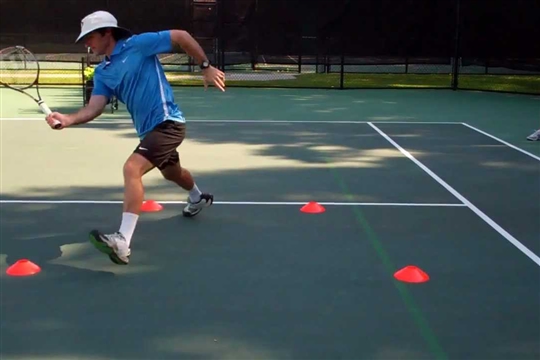DRILLS VS GAMES
Tue, 01 Aug 2017 00:00

I was once asked this question by a parent during a summer camp: ‘Why aren’t my children doing any tennis drills?’ My short answer was: "They need to learn the game before I can teach them any technique".
The longer version would have started with: "I hate children queuing! they learn nothing other than laziness when queuing. Yes I can make your child look good by hand feeding some easy balls. You, as a parent, would then think it was money well spent but the truth is that your child would have been bored and wouldn't have learnt much". Children need to be able to hit a ball, understand the basic rules, the basic tactics, develop their own understanding and technique before I can technically intervene as a coach.
The science of Skill Acquisition has evolved.
Traditionally, tennis coaching wisdom has led us to believe that to improve a skill we need to break it down into small chunks, perfect the technique through explicit instructional feedback and then practice that skill for thousands of repetitions in a controlled environment. Once that skill has been mastered, we can then take that skill into a game situation and apply it. This dogma is still alive and kicking amongst ‘prehistoric’ coaches today. Unfortunately, this concept is fundamentally flawed.
Human learning is highly task specific. So the task of hitting the Ball in a pre-planned way in a drill, (without opposition or decision making), is a very different task from hitting the Ball in response to positioning and movement in a real game. The less these tasks resemble each other in terms of perceptual information the less likely it is that there will be transfer from one to another.
So the notion that young players must learn skills through drills in isolation is flawed.
Expert Dr Andrew Wilson:
“The old-school way of thinking about learning is as you describe; the learner has to acquire some core competence, a motor programme that they can then roll out on demand and tweak to fit the current context. This, frankly, isn’t true at all. Learning really requires that you spend time learning to perceive the relevant information which will support your action selection and control, and this information is only created by the task as it unfolds. ”
So why is their so much focus on improving skills through drills when we can design games that can best develop skill AND game intelligence all at once?!
Drills have got their place in tennis coaching. They help develop specific skills, grow confidence in applying them in a game situation but it is important to integrate the new drilled skills into game practice. Match practice is the time to connect the new skill with the game intelligence.
So what does it mean to our 10is coaching philosophy?
It means that we have to adapt our feed, use "live drills" and implement decision making. A coach very often gives you the perfect feed to ensure you are successful. At 10is, players very often feed each others ensuring the ball is rarely perfect creating something close to a real game situation. Our coaches also use various type of feed (racket feed, hand feed, rally) and spins (flat, slice, topspin) to ensure they are challenging the players, but most of all, we always try to give the players 10-15 minutes to play matches and connect it all.